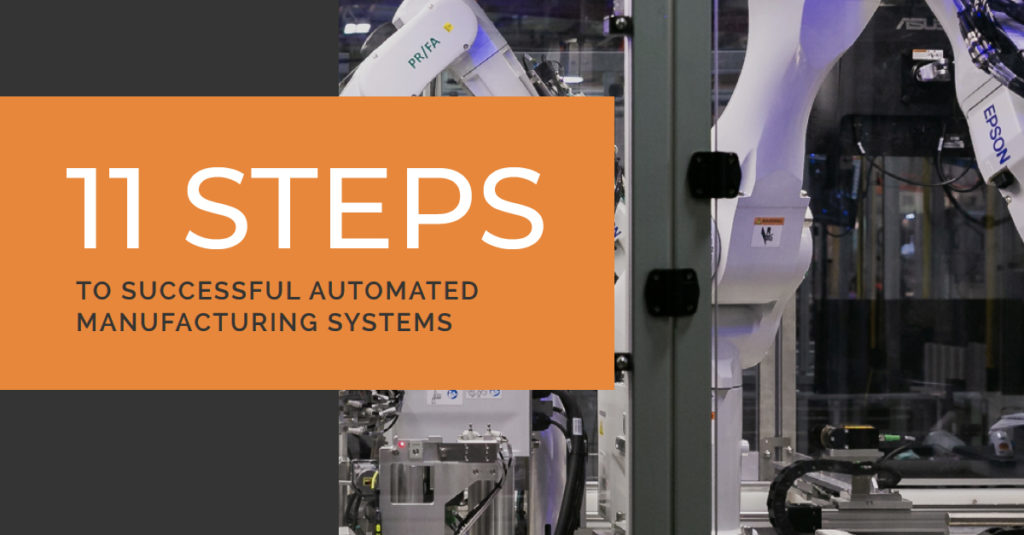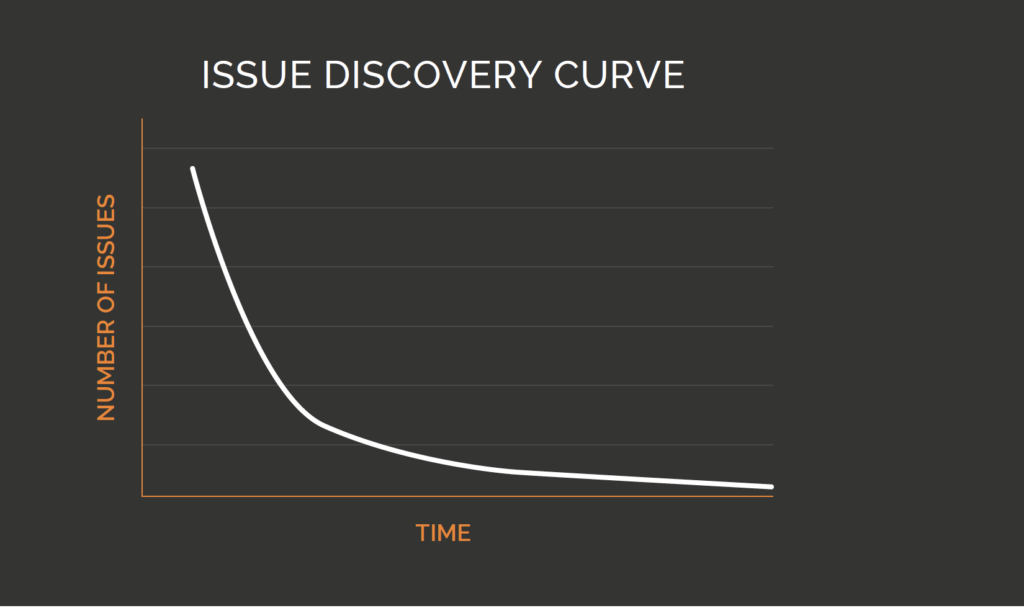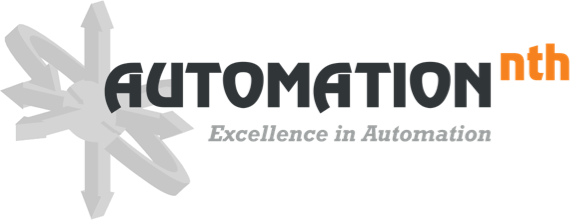
This is the final post in the series of 11-steps to follow to achieve success in automated manufacturing systems. If you’re new to this series, you can start with the first step: When to Automate.
In this post, we’re covering Step 11—Continuous Improvement.
- When to Automate
- Where to Start
- Who Should Be Involved
- How an Automation Architect Selects an Equipment Supplier
- The Contract
- Defining the Solution
- Project Execution
- Runoff & Factory Acceptance Test at Supplier
- Operator & Maintenance Training
- Installation, Final Acceptance & Production Start-Up
- Continuous Improvement
To get all 11 steps together in an ebook, fill out the form below and we’ll send it to you!
Step 11: Continuous Improvement
After the equipment enters production there will still be issues to resolve and opportunities for optimization. Common issues include unplanned downtime, low yield, and slow cycle time. As depicted in Step 7: Project Execution , equipment issues typically never go to zero:

The builder will typically have a contractual requirement for the equipment to reach a specified level of Overall Equipment Effectiveness (OEE) during acceptance testing. The OEE requirement is commonly around 85, which means there is still more room for improvement until the equipment gets to 100 OEE or above. The user will need to evaluate the value of the remaining improvement opportunities. How much is extra yield or availability worth? This will help the user calculate ROI on optimization activities.
The user needs data from the machine in order to efficiently optimize the equipment. The user should seek to understand issue trends and what, when, and where issues are happening. With the right data and analytics capabilities, the user can understand the biggest issues driving equipment performance and prioritize accordingly. Automationnth’s OEE Optimizer® product was built specifically for this purpose. It helps manufacturers send machine data to the cloud, visualize performance, and quickly pinpoint which issues to tackle first.
PREVENTIVE MAINTENANCE & SITE SUPPORT
The builder should deliver a Planned Maintenance schedule to the user as part of its scope of work. This schedule should be part of the machine manual and include the checks that are required and their frequency. If the equipment is complex and requires calibration, there may be value in having the builder complete the planned maintenance on behalf of the user. During this time the builder can also check on all the total system health and perform routine maintenance (ex. grease hardware, check tightness of belts, etc.). If the cost of machine downtime is high, the user may also consider entering a site support agreement with the builder to ensure there is sufficient responsiveness to downtime and other issues.
INCENTIVES
In most automation projects, builders will deliver their equipment and move on to their next project after their contractual commitment is met. However, this means the user misses out on potential high value optimization opportunities that are available after the equipment is in production.
To ensure the user is getting the most out of their equipment, they should consider partnering with the builder for the entire life cycle of their equipment, including after it’s in production. The builder will have more knowledge than anyone about how to improve equipment performance, but the builder needs the right incentives or support agreements in place in order to have the time to support these efforts.
